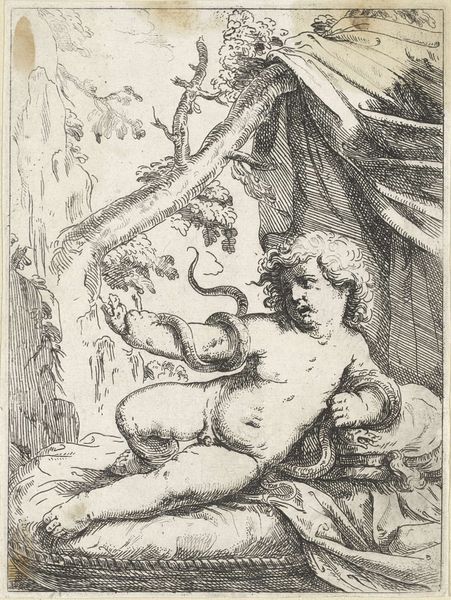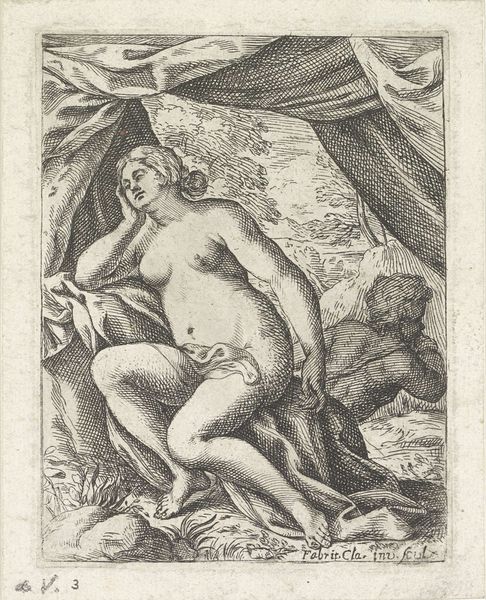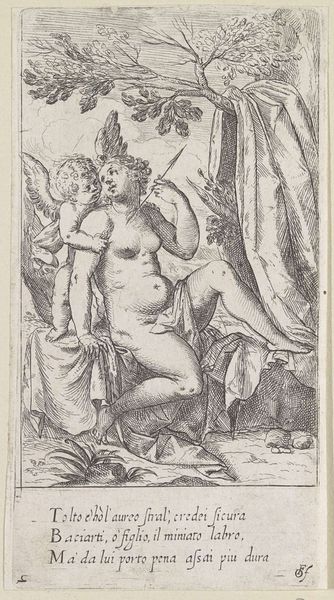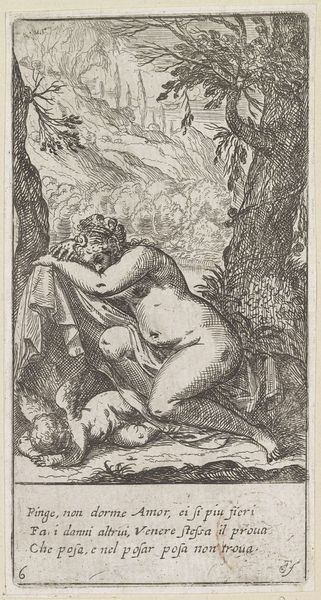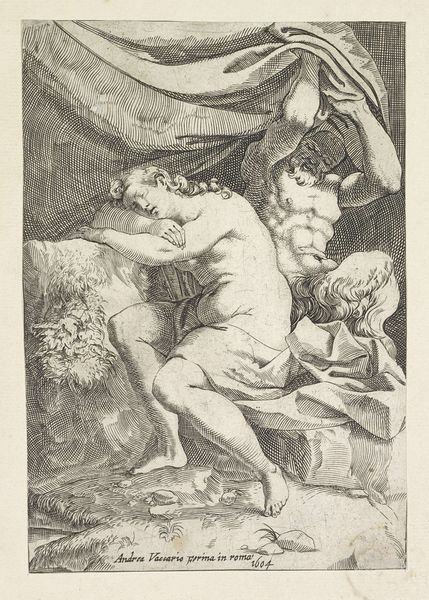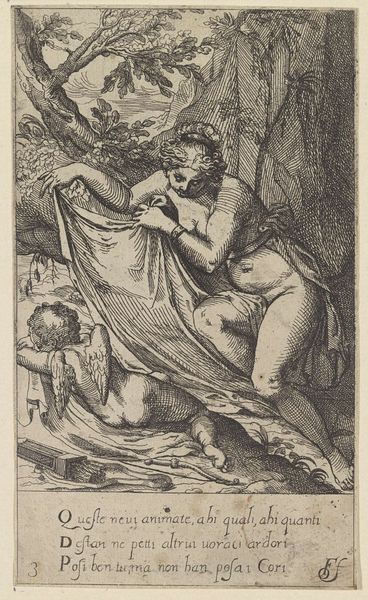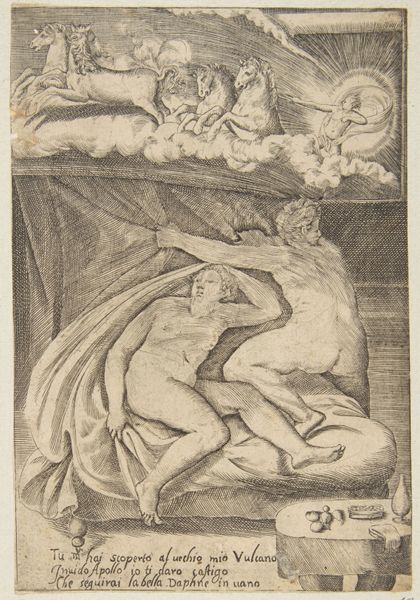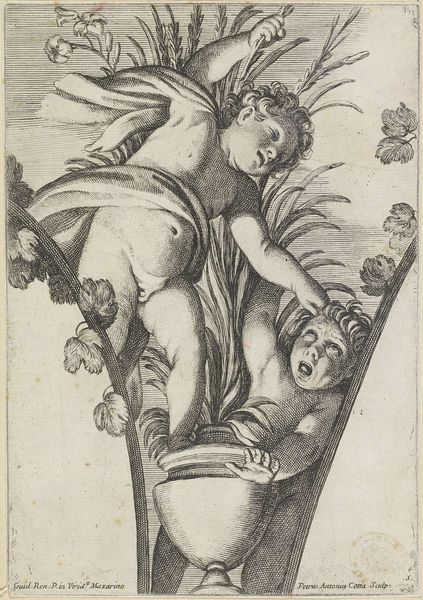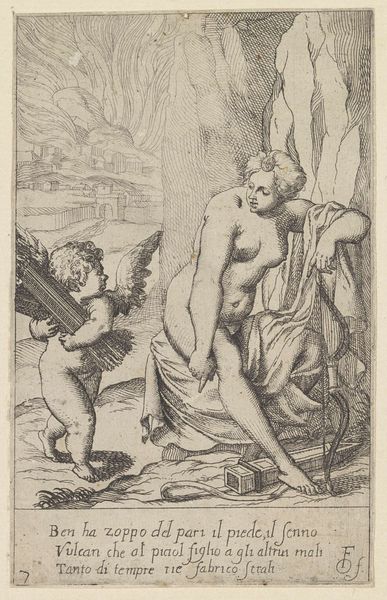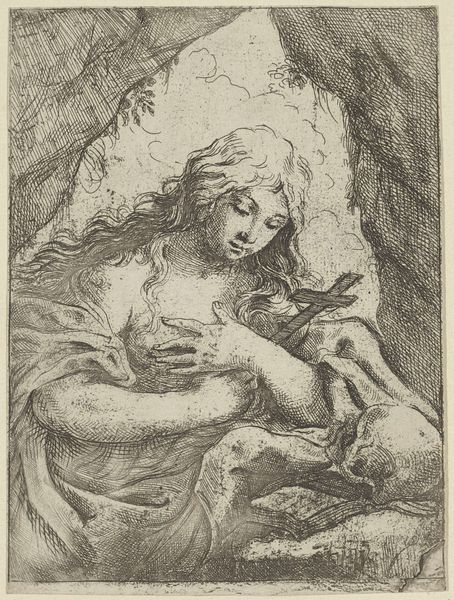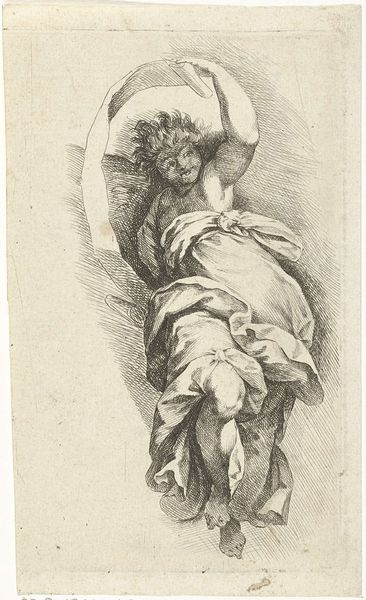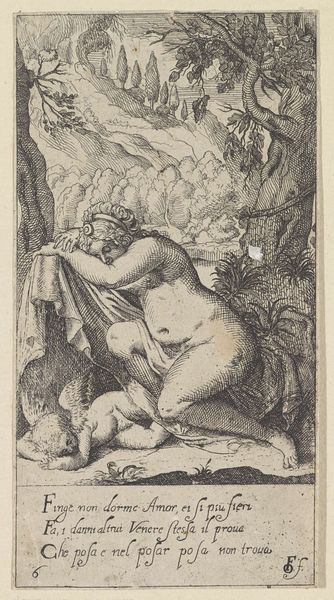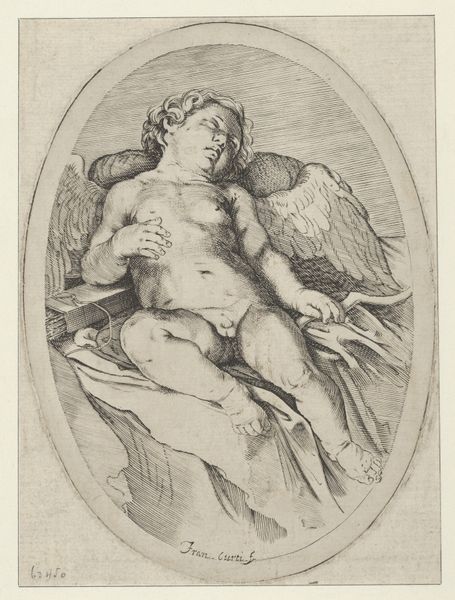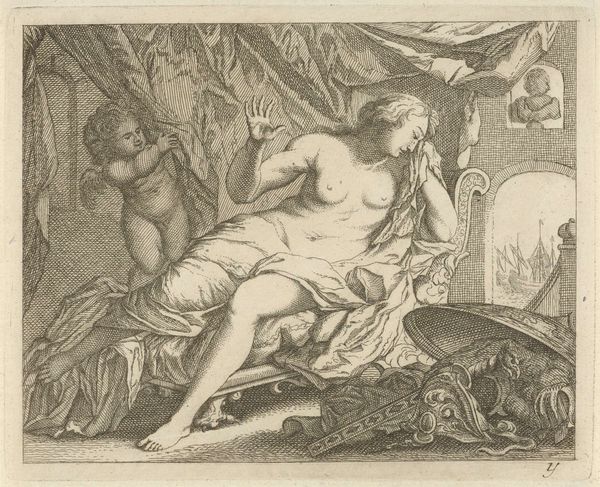
drawing, engraving
#
drawing
#
allegory
#
baroque
#
figuration
#
nude
#
engraving
Dimensions: height 179 mm, width 135 mm
Copyright: Rijks Museum: Open Domain
Curator: Here, we’re looking at "Amor slapend in een tent," or "Cupid Sleeping in a Tent." This engraving, rendered in the Baroque style, comes to us from Lorenzo Loli, an Italian artist working primarily in the 17th century. It’s currently housed at the Rijksmuseum. What are your first impressions? Editor: Immediately, I'm struck by the contrast between the delicate rendering of Cupid’s body and the somewhat chaotic lines forming the tent and drapery around him. It creates a fascinating tension. It almost seems as though his innocence is being overshadowed, trapped by these strong material signifiers of, perhaps, luxury and constraint. Curator: That’s a sharp observation. The allegorical weight of Cupid as the god of love can’t be ignored. His sleep, though seemingly innocent, introduces complexities about love’s vulnerability. Are we seeing commentary on the ephemerality of passion, its reliance on constructed comforts—the “tent,” so to speak? Editor: Precisely. I mean, who profits from idealizing romantic love? Where is our focus directed when allegories such as this enter into the visual culture? In the context of the baroque, where the Church wielded considerable influence over artistic commissions, there’s the question of whether visual portrayals of sexuality become tools to instruct moral principles. Curator: I hadn't considered a critique, per se, but the Baroque did often imbue pleasure with the shadow of moral instruction. It certainly speaks to how artistic patronage dictated how art was received at the time, and how it continues to be received by the museum-going public today. It raises interesting questions about desire. Editor: The question is also relevant when we examine the artist himself. I believe it would be helpful to interrogate how Loli and his career intersected with the societal power structures during his era. Moreover, this piece could lend itself to a deeper conversation about representations of childhood. Is this Cupid merely an innocent cherub? Or does it encourage adults to engage with and possess it through objectification? Curator: This piece makes visible the social expectations and responsibilities thrust upon individuals to embody symbolic love—something not so obvious to those outside the discourse. Editor: It is a lens to evaluate how the figure is framed by societal views and if their authenticity can endure under institutional demands to act, love, or perform the role. It provides a critical perspective, especially when allegories become tools for social influence. Curator: Agreed. A simple sleeping figure invites much deeper consideration about its place in history. Editor: Precisely. Thank you for providing the background to consider the context.
Comments
No comments
Be the first to comment and join the conversation on the ultimate creative platform.
